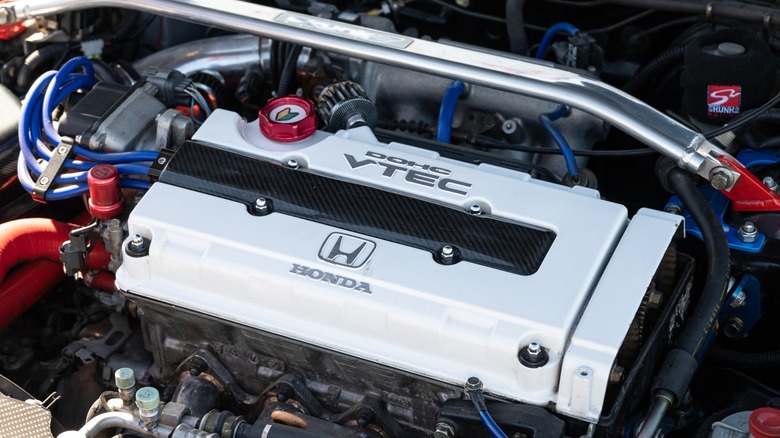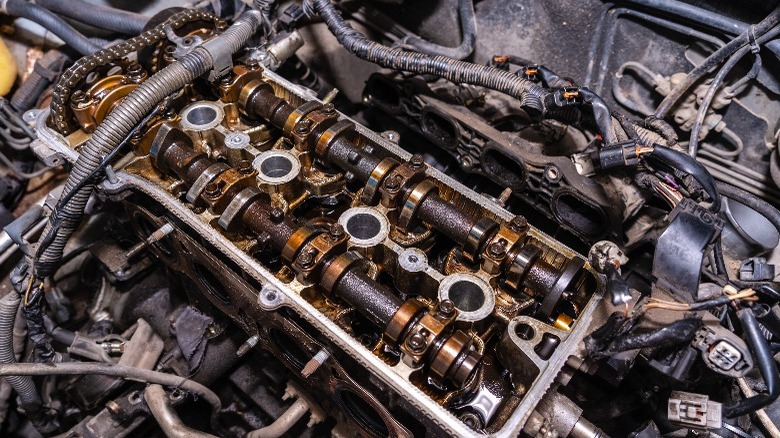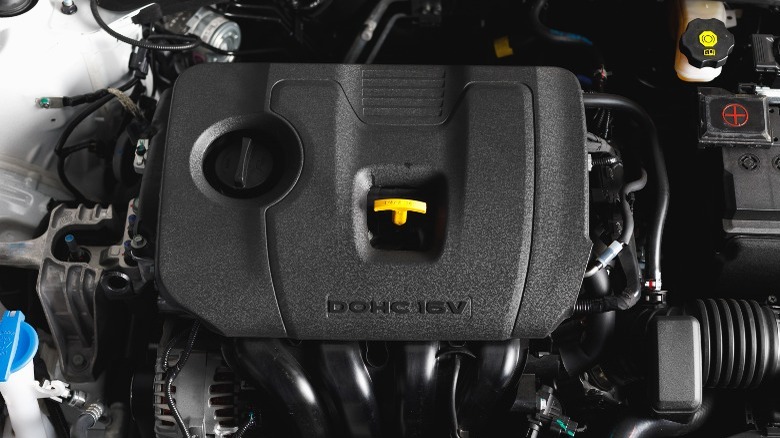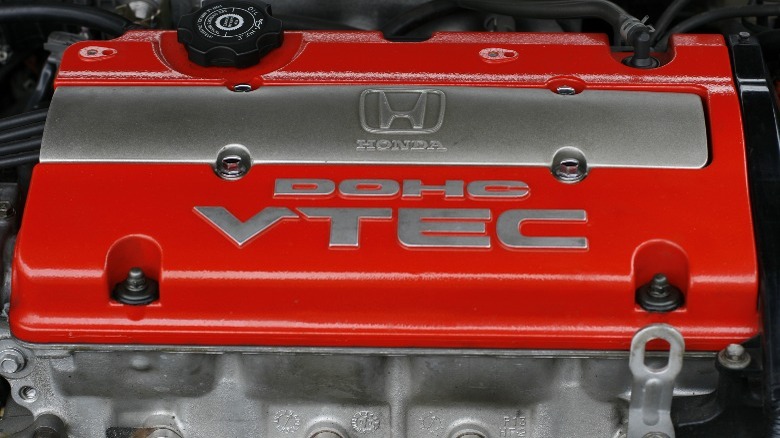SOHC Vs DOHC Engines Explained: What's The Difference, And Which Is Better?
When it comes to modern internal combustion engines, there are two types that dominate the industry: pushrod and overhead camshaft (OHC). While pushrod engines were the stars of the show for many years, they have fallen out of style in the last few decades. And although you can still find many cars with pushrod engines, including General Motors' notorious LS engine line, most modern vehicles feature SOHC or DOHC engines. But what does that mean, and what's the difference between the two?
First of all, SOHC stands for single overhead camshaft, while DOHC stands for dual overhead camshaft. That means that SOHC engines have a single camshaft located inside the cylinder head above the engine pistons, while DOHC engines have two camshafts positioned above the pistons inside the cylinder head. That's in contrast to pushrod engines, which have one camshaft located below or between the pistons inside the engine block.
Overhead cam motors are capable of much more precise valve timing than their pushrod predecessors. That capacity for extremely accurate valve movement allows OHC engines to produce more power and run more efficiently, and has contributed greatly to the popularity of these motors over the past several decades. But while both SOHC and DOHC engines are marvels of modern engineering, they're not the same. DOHC engines are generally more powerful and create more high-end torque. SOHC engines, on the other hand, are cheaper to build and typically have more affordable repair costs and replacement parts. That said, let's go ahead and explore these two engine styles in greater detail. Here's what you need to know about SOHC and DOHC engines, including the differences between the two and which one is better for your needs.
How do valves and camshafts work in a car engine?
Before we dive deeper into the differences between SOHC and DOHC engines, it might be helpful to explain how camshafts and valves work in car motors.
Internal combustion engines derive their power from small, contained explosions. Those explosions propel the pistons up and down inside the motor. The pistons, in turn, transfer that power to the crankshaft, which then drives various other components, including the timing chain or belt and the transmission. As the timing chain spins, it turns one or more camshafts. The camshafts are responsible for opening and closing the exhaust and intake valves. The intake valves allow air to enter the combustion chambers, facilitating the explosions of mixed gasoline and oxygen. The exhaust valves allow the waste from those explosions to leave the engine through the exhaust system.
Both the intake and exhaust valves must be timed properly for the engine to work. They're able to open and close at the proper times thanks to the way the camshaft(s), crankshaft, and timing chain work together. Every piece of this system has its role, and if one component fails, the entire system will fall out of balance. The crankshaft gets its power from the pistons' movement, and as it spins, it turns the timing chain. The timing chain connects to both the crankshaft and the camshaft(s), syncing their movement and allowing the valves to open and close at the correct moments. The valves' opening and closing allows the process to start all over again, as more oxygen enters the combustion chambers, facilitating the explosions that propel the pistons forward and spin the crankshaft.
What are the differences between SOHC and DOHC engines?
Both SOHC and DOHC engines use camshafts located in the cylinder head, in contrast to pushrod engines that have their camshafts positioned in the engine block. However, the primary differences between SOHC and DOHC engines are the number of camshafts used and the ways those camshafts affect the valves.
Single overhead camshaft engines have, as the name implies, one camshaft per cylinder head. They're located above the pistons and are driven by a timing chain or belt. In these engines, one camshaft controls both the intake and exhaust valves. As the timing chain spins the camshaft, lobes — or raised areas along the shaft — actuate the valves. The lobes are positioned in such a way that, as the camshaft spins, they open and close individual valves at precise times during the combustion process. Most SOHC engines have two valves per cylinder: one intake and one exhaust. However, some SOHC motors feature one intake and two exhaust valves or two of each, like the Honda J engine — one of the most reliable Honda motors ever built.
Dual overhead camshaft engines have two camshafts located inside the cylinder head above the pistons. These camshafts are also driven by a timing chain or belt. The difference between the two styles is that DOHC engines feature one camshaft for the intake valves and one for the exhaust valves. This design allows manufacturers to build each cylinder with four valves much more efficiently than in SOHC motors, resulting in increased horsepower, engine airflow, and higher-end torque.
Which one is better?
SOHC and DOHC engines both have their pros and cons. In terms of power, DOHC engines are hard to beat. They produce better airflow due to the increased space between camshafts, translating to a range of performance benefits. DOHC engines are typically capable of greater horsepower outputs and more high-end torque. They're also more efficient and can make better use of precision valve timing technology like VTEC, one of Honda's best inventions. The downside to DOHC engines is that they tend to be more expensive to build and repair, due to the inclusion of more parts and more complex technology.
SOHC engines, on the other hand, are cheaper to build, thanks to their use of fewer and less-complicated parts. They make better low-end torque, due to reduced airflow, but are less powerful than their DOHC counterparts for that very same reason: reduced airflow. Because they're built with fewer and less complex parts, single overhead cam motors tend to be more affordable and have cheaper maintenance costs than DOHC engines. They're also usually easier to repair for the same reasons.
At the end of the day, dual overhead camshaft motors are usually better in terms of performance and efficiency. However, if you're more concerned with affordability, a single overhead camshaft engine may be the better choice for you.



